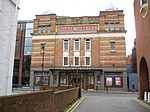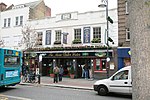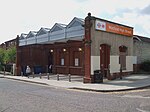St John's Church, Watford
Accuracy disputes from March 2022Anglo-Catholic church buildings in HertfordshireBuildings and structures in WatfordChurch of England church buildings in HertfordshireGrade II listed churches in Hertfordshire ... and 1 more
History of Watford

The Church of St John the Apostle and Evangelist is a Church of England parish church located in Sutton Road, close to the centre of the busy market town of Watford in Hertfordshire. It is within the Diocese of St Albans and has throughout its history been one of the leading Anglo-Catholic churches in the southeast of England. Today it is part of the Richborough Episcopal Area, and lies in the pastoral and sacramental care of the Provincial Episcopal Visitor.
Excerpt from the Wikipedia article St John's Church, Watford (License: CC BY-SA 3.0, Authors, Images).St John's Church, Watford
Cross Street,
Geographical coordinates (GPS) Address External links Nearby Places Show on map
Geographical coordinates (GPS)
| Latitude | Longitude |
|---|---|
| N 51.6586 ° | E -0.3939 ° |
Address
Saint John the Apostle and Evangelist
Cross Street
WD17 2QD
England, United Kingdom
Open on Google Maps









